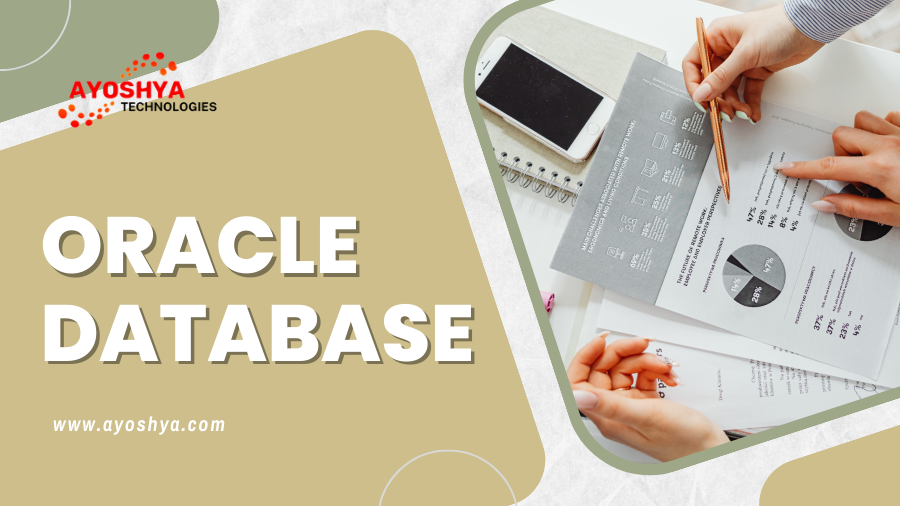Unraveling the Power of Oracle Database: A Deep Dive
In the realm of database management systems, Oracle Database has emerged as a stalwart, providing a robust and scalable solution for enterprises globally. Exploring its evolution, key features, use cases, and future trends.
1. Introduction
Oracle Database, developed by Oracle Corporation, is a relational database management system (RDBMS) known for its efficiency, reliability, and comprehensive features. It has played a pivotal role in managing and organizing vast amounts of data for businesses of all sizes.
2. Evolution of Oracle Database
From its inception in the late ’70s to the current versions, Database has undergone significant evolution. It has adapted to technological advancements, incorporating features that cater to the changing needs of the digital landscape.
3. Key Features and Capabilities
3.1 High Performance
It is renowned for its high-performance capabilities, ensuring swift and efficient processing of complex queries. This feature is crucial for applications requiring real-time data access.
3.2 Scalability
Scalability is a cornerstone of Database, allowing businesses to seamlessly expand their database infrastructure as data volumes grow. This flexibility ensures optimal performance even as workloads increase.
3.3 Security Measures
Security is a paramount concern, and Database addresses it with robust security measures, including data encryption, access controls, and auditing features. These safeguards protect sensitive information from unauthorized access.
3.4 Multitenancy
It embraces multitenancy, enabling the consolidation of multiple databases into a single container database. This approach optimizes resource utilization and simplifies management.
4. Oracle Database Editions
4.1 Oracle Database Standard Edition
Ideal for small to medium-sized businesses, this edition offers essential features for database management.
4.2 Oracle Database Enterprise Edition
Designed for larger enterprises, this edition provides advanced features, high availability, and performance tuning options.
4.3 Oracle Database Express Edition
A free, lightweight version for educational purposes and small-scale applications.
5. Use Cases and Applications
5.1 Enterprise Solutions
It is the backbone of various enterprise solutions, supporting critical business operations, including finance, supply chain, and customer relationship management.
5.2 Cloud Integration
With seamless integration into Oracle Cloud, businesses can leverage the benefits of cloud computing, including scalability and cost-efficiency.
5.3 Data Warehousing
It excels in data warehousing applications, facilitating the storage and analysis of large datasets for informed decision-making.
6. Oracle Database vs. Competitors
6.1 MySQL
Compared to MySQL, Database offers more advanced features, making it suitable for complex enterprise applications.
6.2 Microsoft SQL Server
While Microsoft SQL Server is a formidable competitor, Database is often preferred for its scalability and performance in large-scale environments.
6.3 PostgreSQL
PostgreSQL is an open-source alternative, but Oracle Database’s comprehensive features make it a preferred choice for enterprises with diverse needs.
7. Best Practices for Oracle Database Administration
7.1 Regular Backups
Regular backups are critical to data integrity. Database administrators should implement robust backup strategies to prevent data loss.
7.2 Performance Tuning
Efficient performance tuning ensures optimal database functionality. Administrators should regularly analyze and optimize the database for peak performance.
7.3 Security Audits
Conducting regular security audits helps identify vulnerabilities and ensures compliance with data protection regulations.
7.4 Software Patching
Keeping the database software up-to-date with the latest patches is vital for addressing security vulnerabilities and improving performance.
8. Challenges and Solutions
8.1 Data Migration
Data migration can be a complex process. Employing best practices and leveraging Oracle’s migration tools can streamline this task.
8.2 Licensing Costs
While Database offers robust features, licensing costs can be substantial. Businesses should carefully evaluate their needs and explore cost-effective licensing options.
8.3 Complexities in Upgrades
Upgrading Database requires careful planning. Administrators should follow Oracle’s guidelines and perform thorough testing to mitigate potential issues.
9. Future Trends in Oracle Database
As technology advances, It is expected to embrace trends such as automation, AI-driven enhancements, and further integration with cloud technologies.
10. Conclusion
In conclusion, It stands tall as a versatile and powerful RDBMS, catering to the diverse needs of modern businesses. Whether managing complex enterprise solutions or facilitating data warehousing, Oracle Database continues to be a frontrunner in the world of database managemen
Frequently Asked Questions
1. What is Oracle Database?
It is a relational database management system known for its efficiency, reliability, and comprehensive features, developed by Oracle Corporation.
2. What are the key features of Oracle Database?
Key features include high performance, scalability, robust security measures, and support for multitenancy.
3. What are the different editions of Oracle Database?
It has Standard, Enterprise, and Express editions, catering to the needs of businesses of varying sizes.
4. How does Database compare to competitors like MySQL and Microsoft SQL Server?
It offers advanced features and scalability compared to MySQL and Microsoft SQL Server, making it suitable for complex enterprise applications.
5. What are the best practices for Database administration?
Best practices include regular backups, performance tuning, security audits, and keeping the software up-to
Read More:



